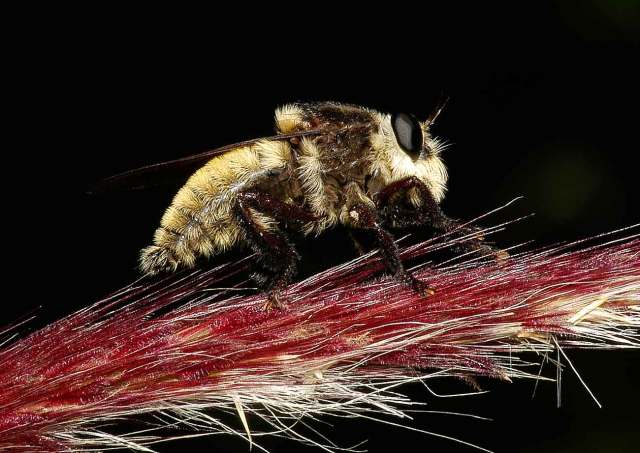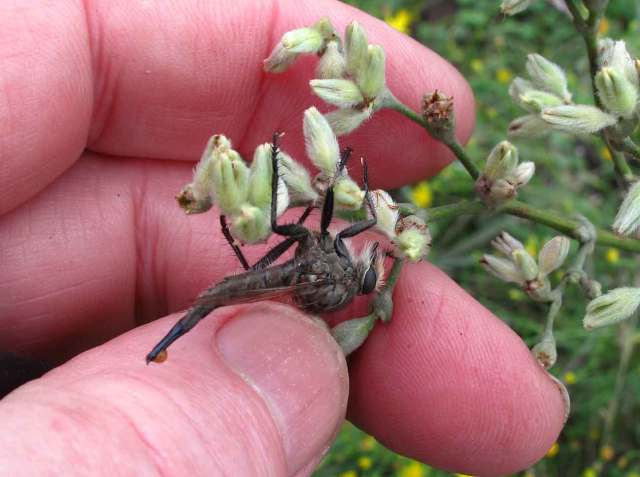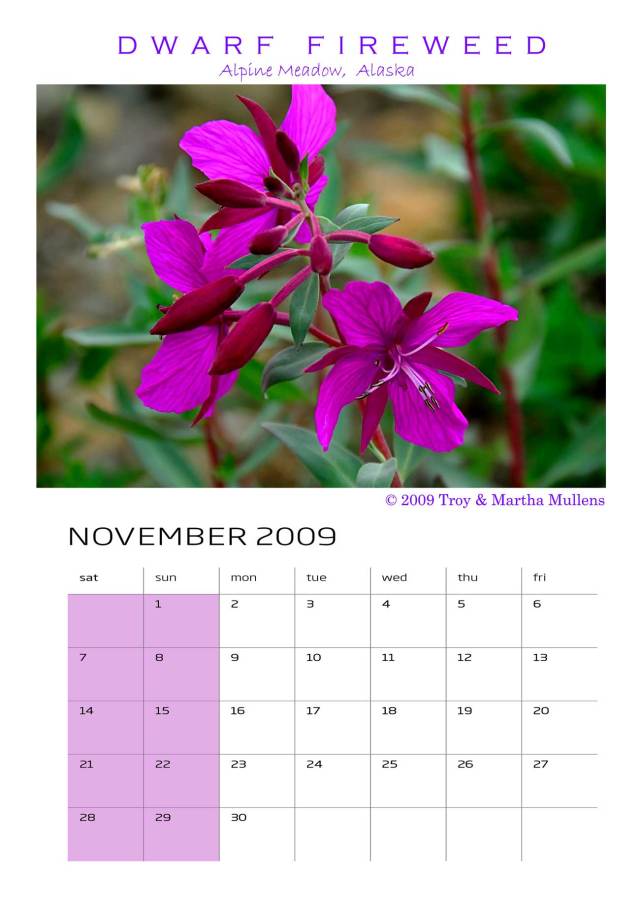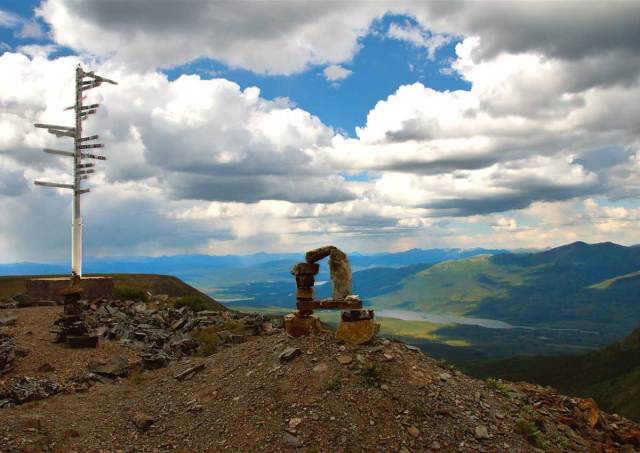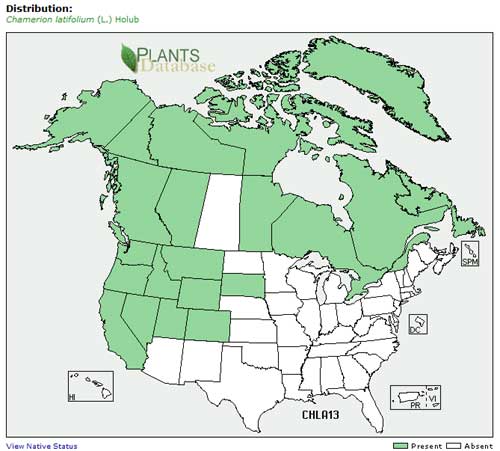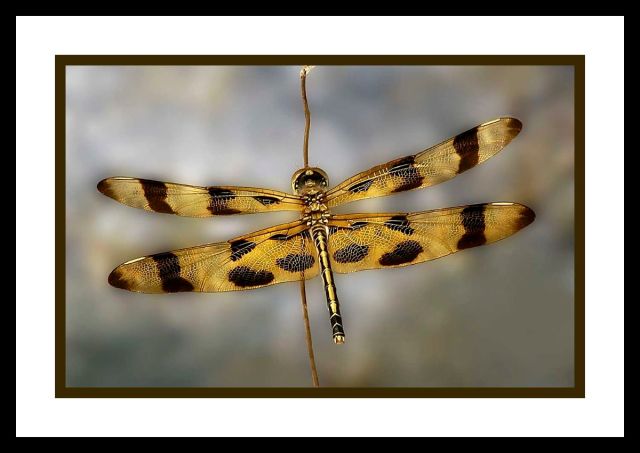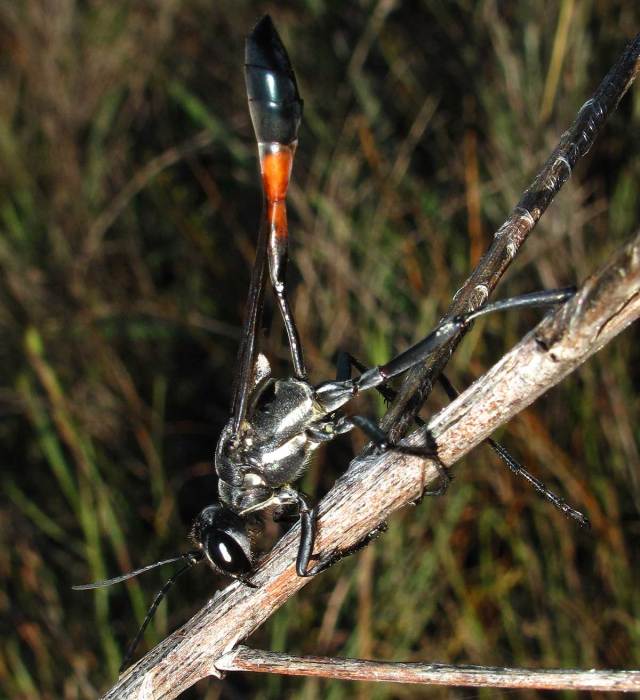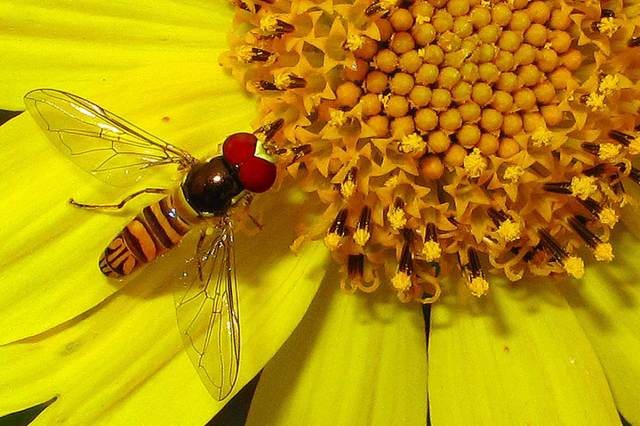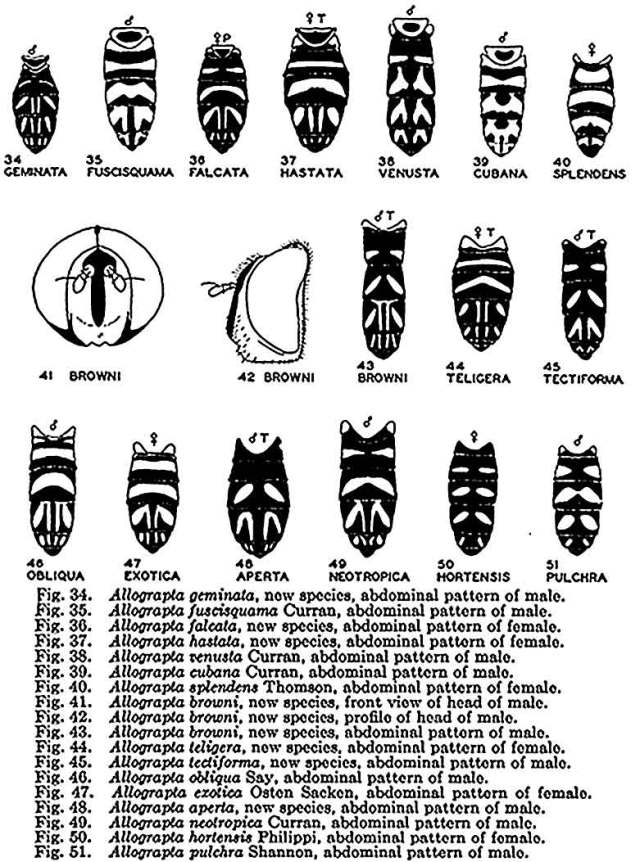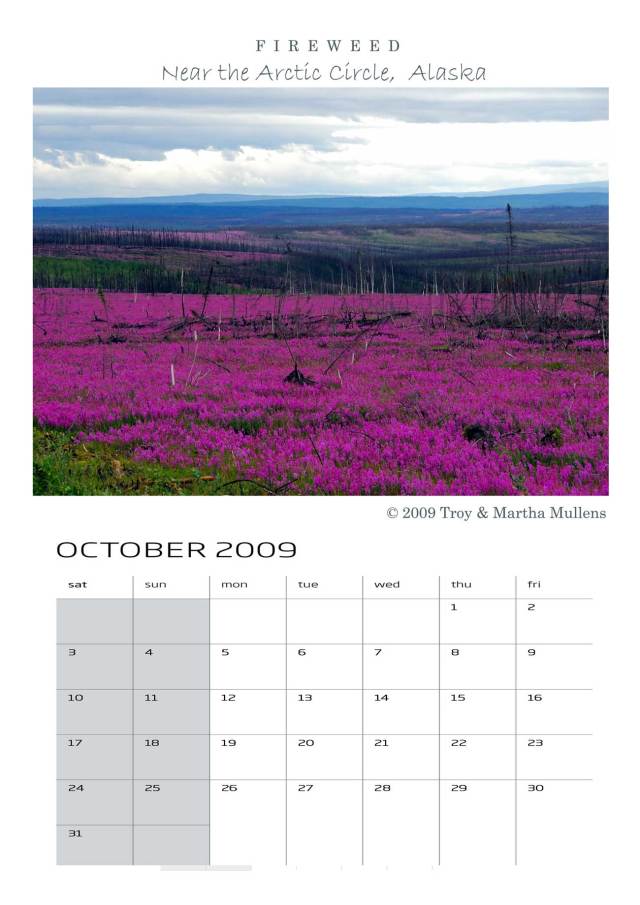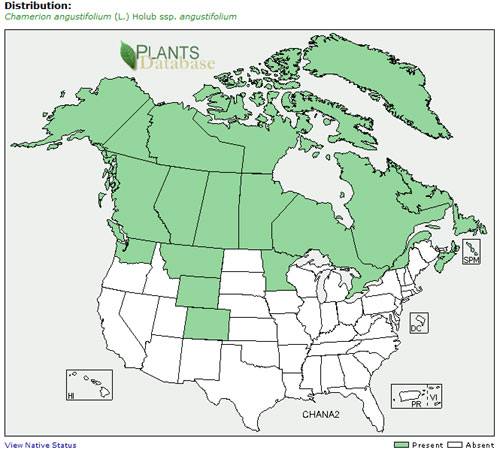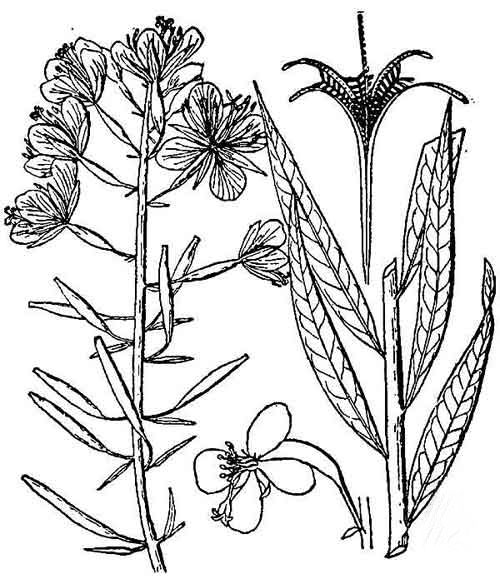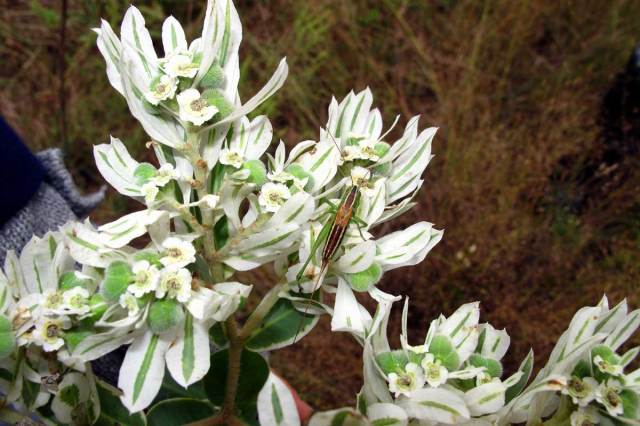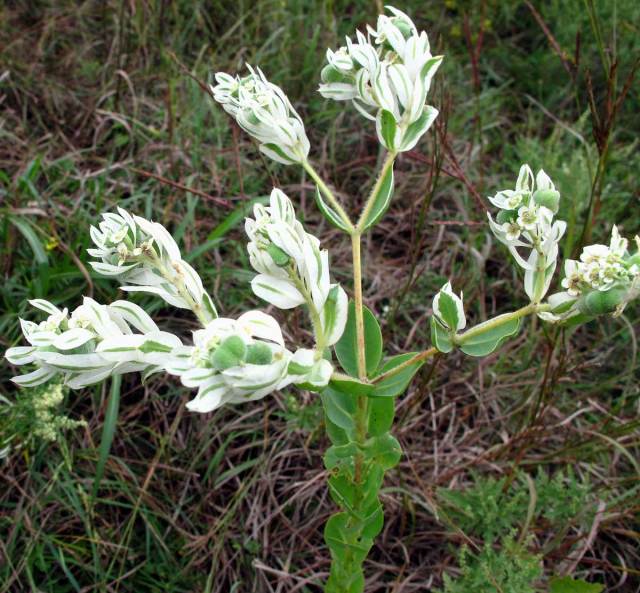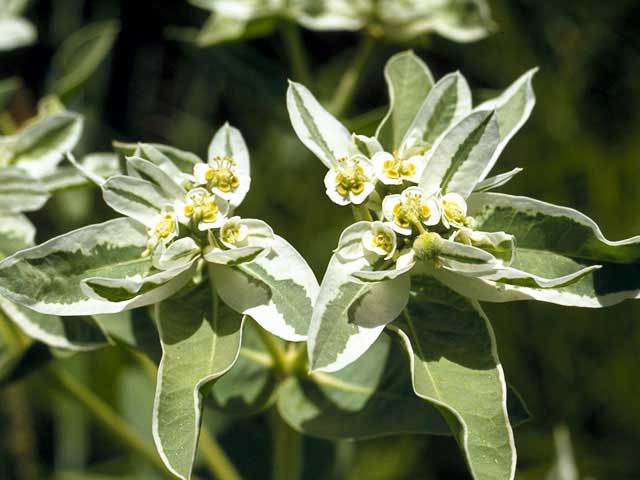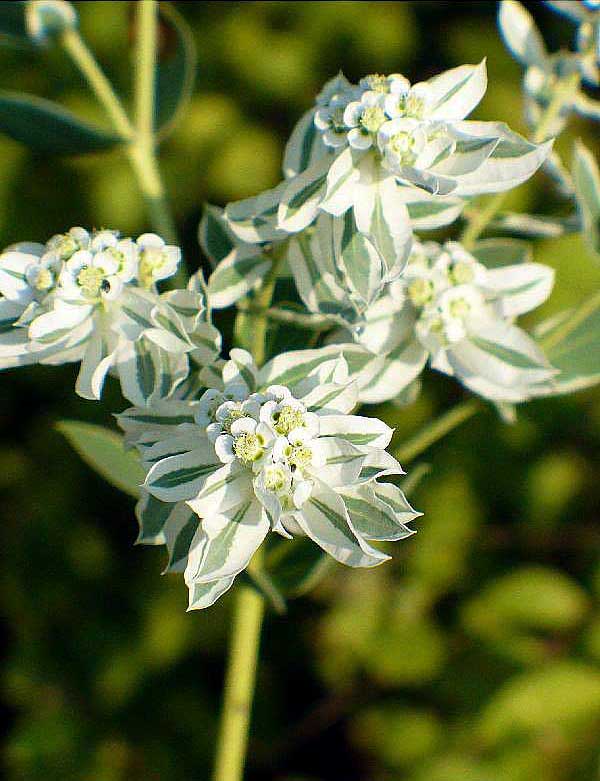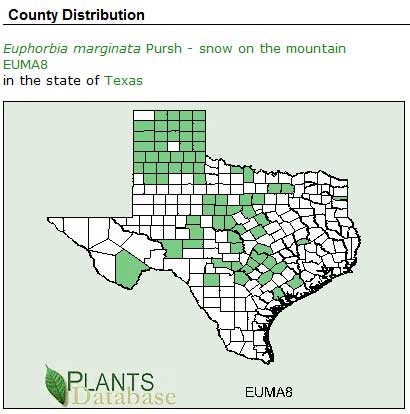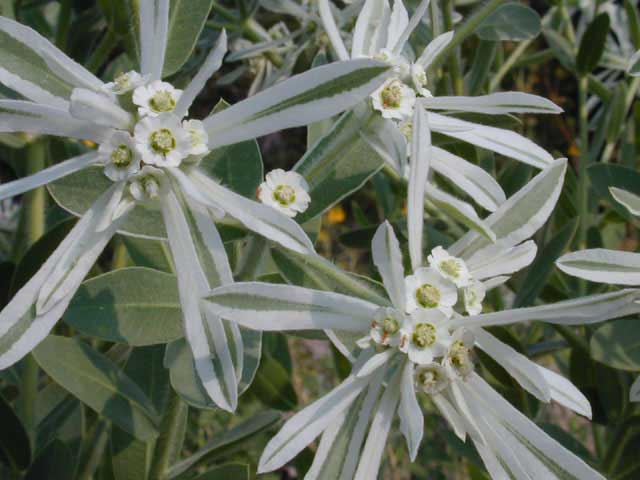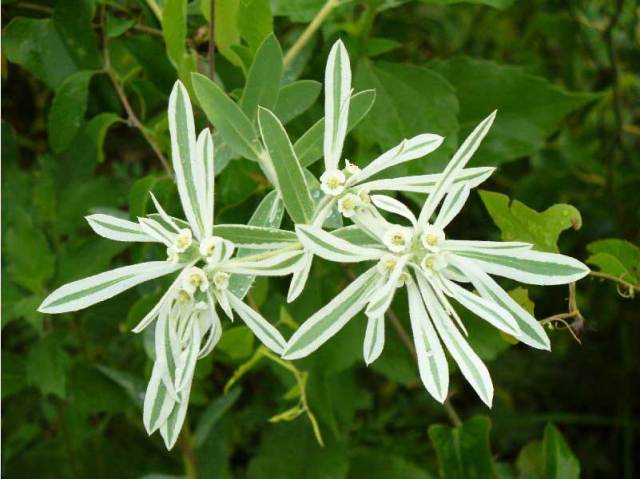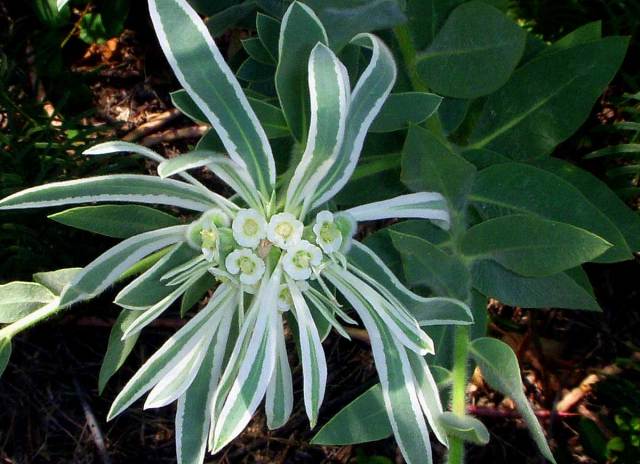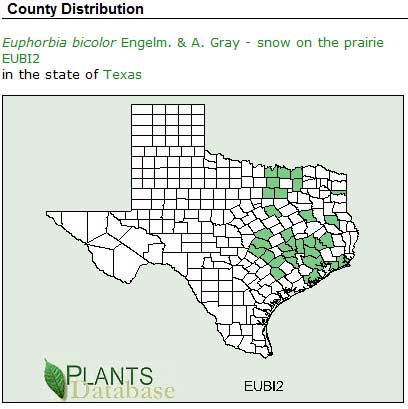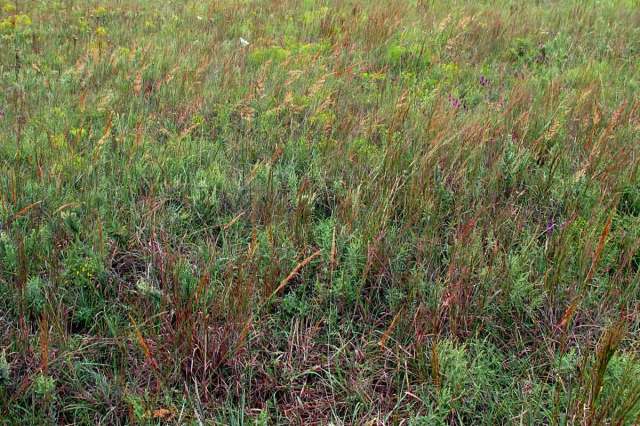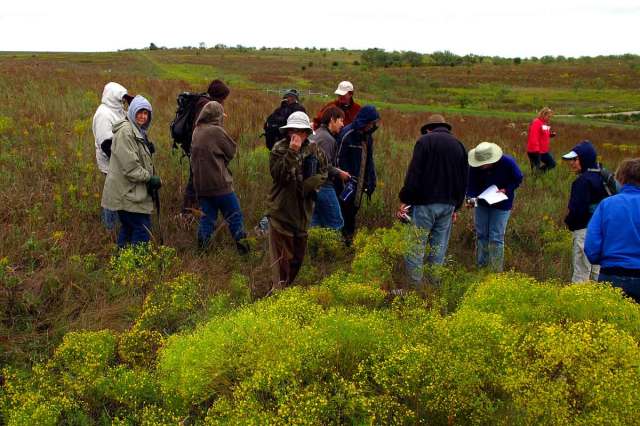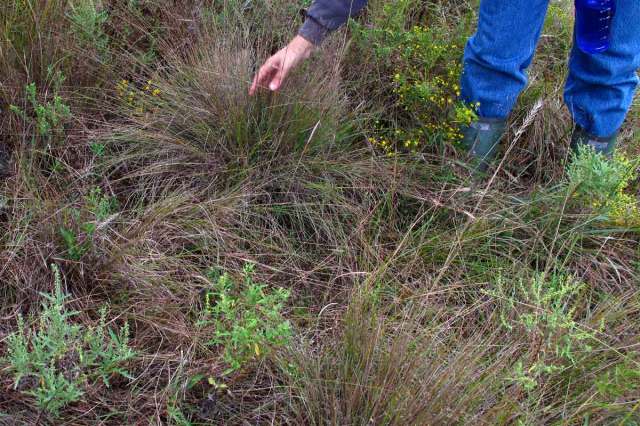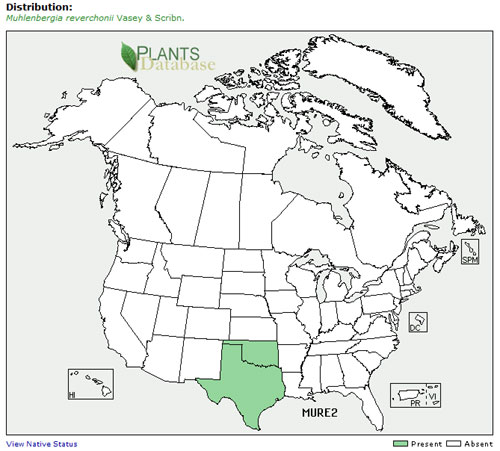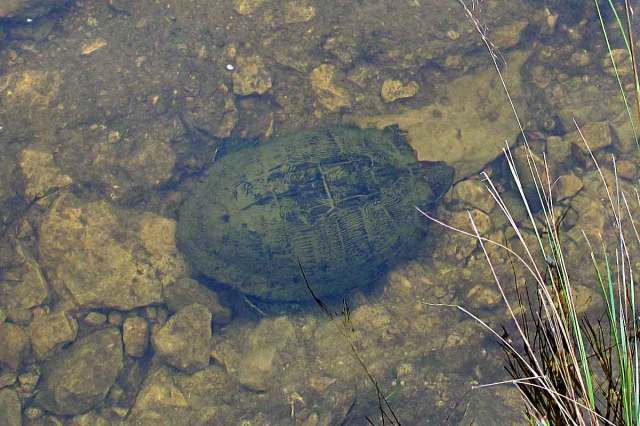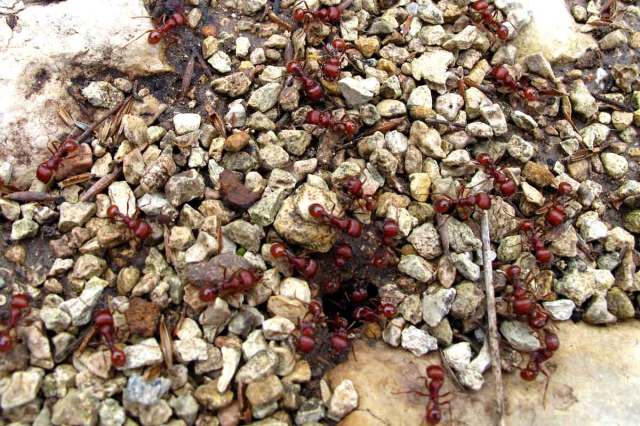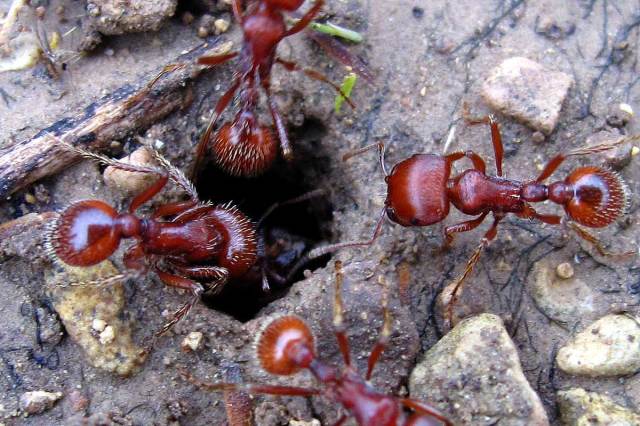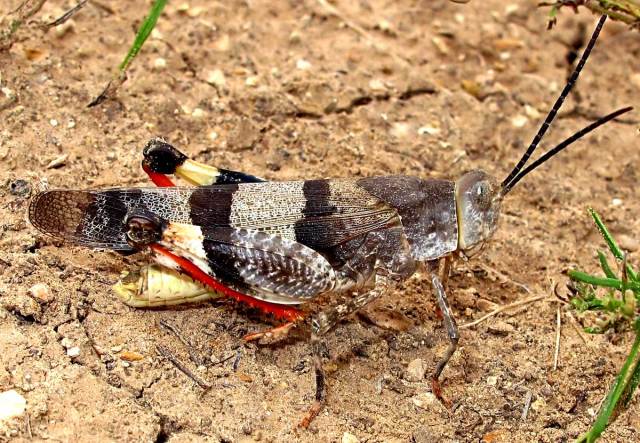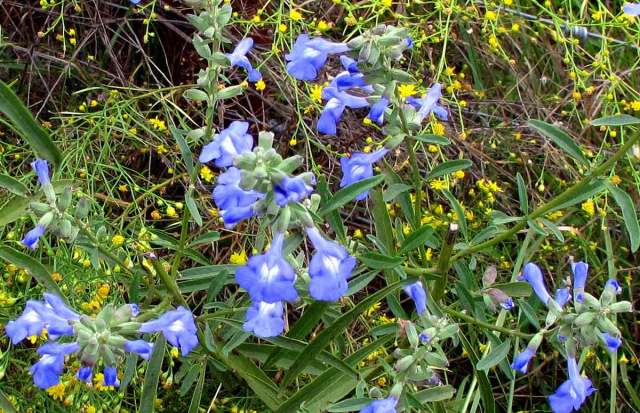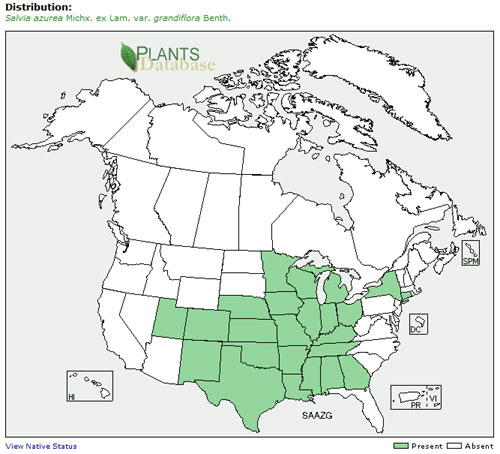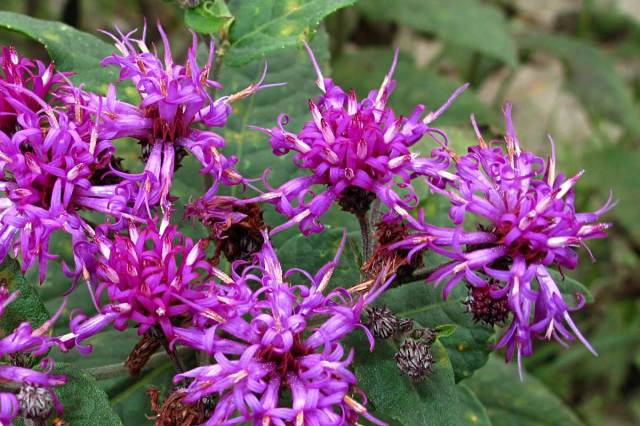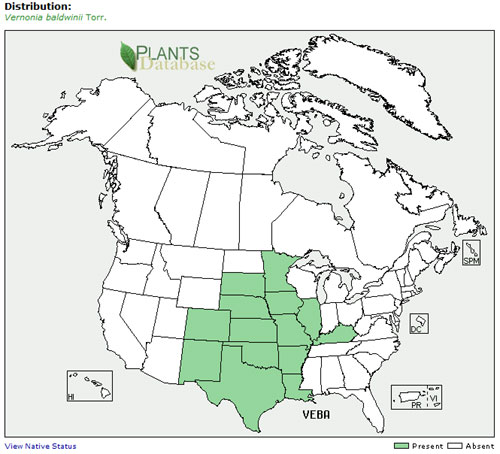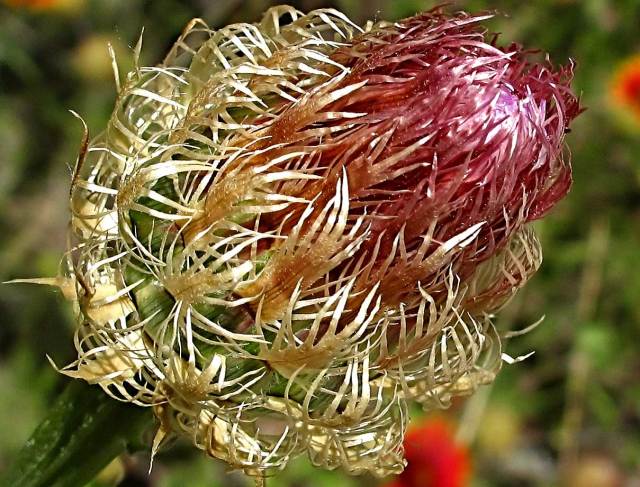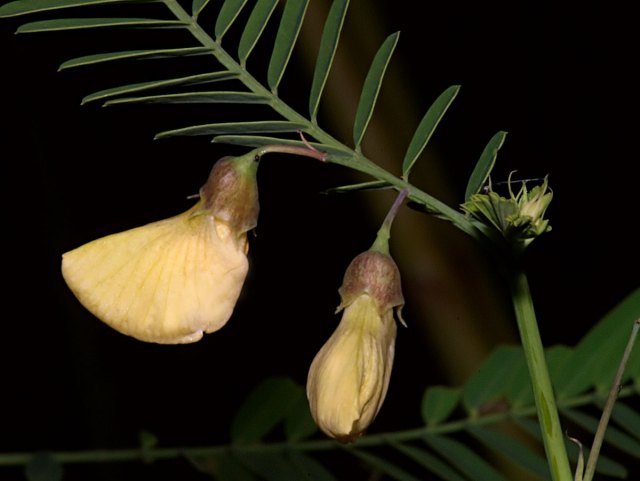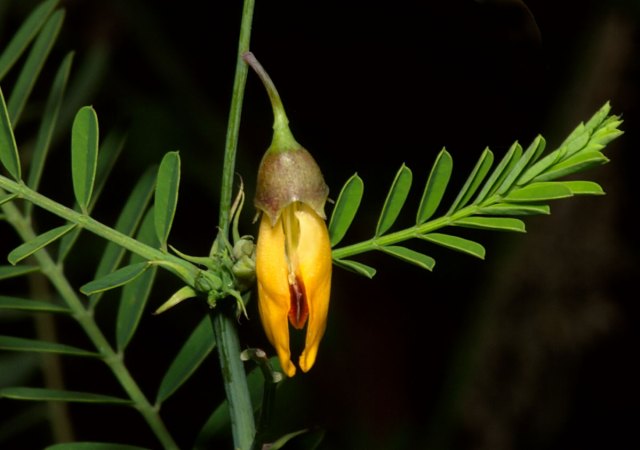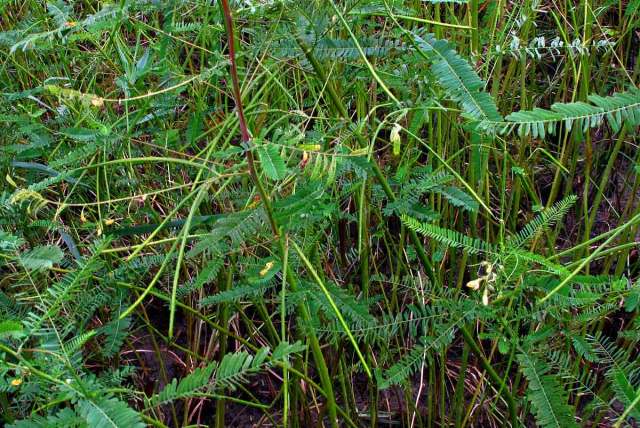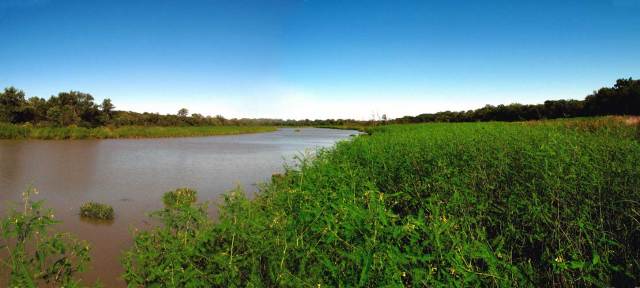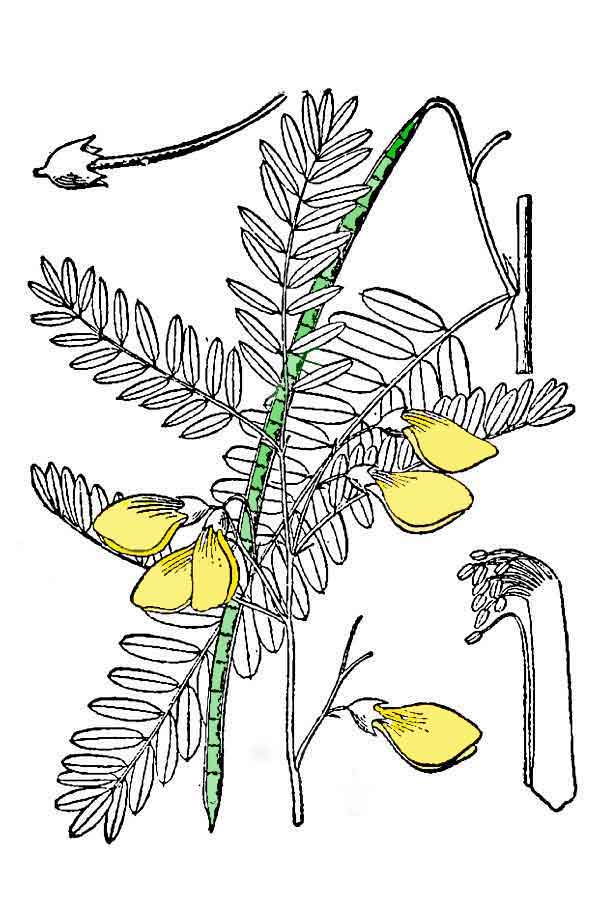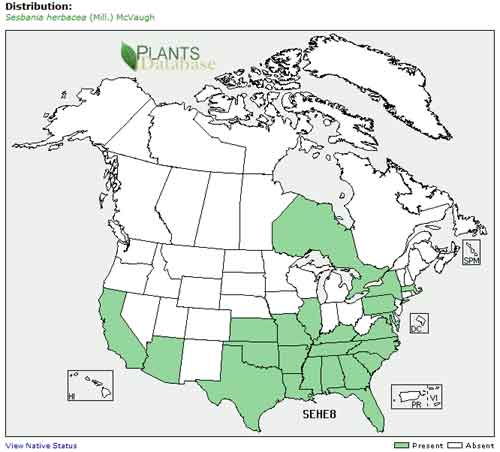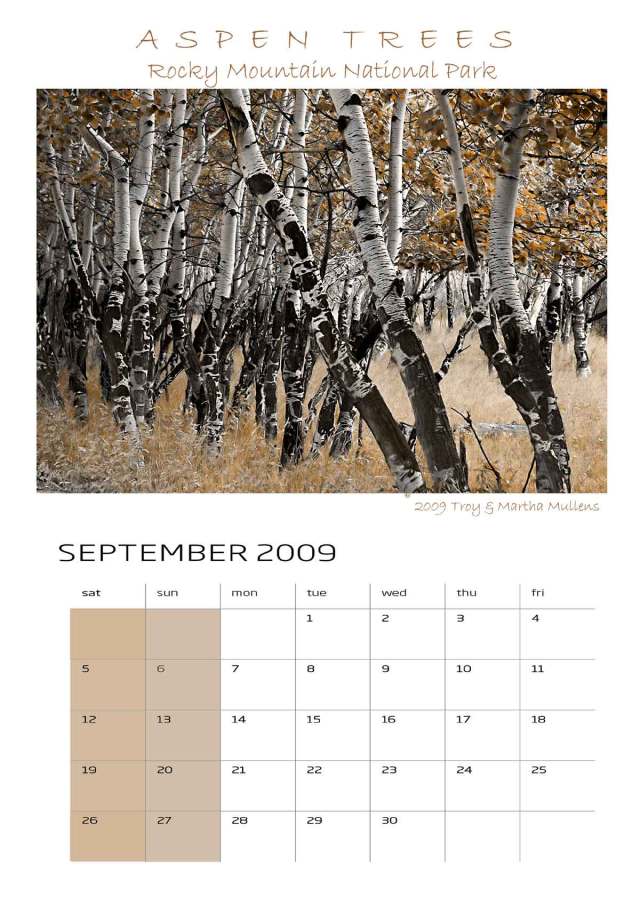Early in July, while walking the Oak Motte and Deer Mouse Trails at the Ft. Worth Nature Center & Refuge, I was surprised by the largest Robber Fly that I have ever seen. I estimated at the time that it must be about 4.5 cm. I thought surely that this must be some prehistoric relic recently thawed from a glacier by the 100 degree heat…. (no, wait)….. there are no currently active glaciers near Ft. Worth, so that theory is out. This must be a living breathing extant species. The glowing emerald green eyes were mesmerizing. Luckily, I had my Canon G10 in my hand and I grabbed this one photo. I tried to move around and get a shot of the face, but he flew away, …… far far away….. <sigh of exasperation>.
I could not wait to get home and identify this beauty. First, I check my copies of Kaufman & Eaton, no luck. Then I looked in Peterson, then Lutz, and etc., etc. Then finally, before going to BugGuide on the Internet, I “Googled” up <giant robber fly, emerald eyes>, and to my surprise, I found a blog post by Ted C. MacRae at “Beetles in the Bush“. BTW, this is one of my favorite Insect and Nature Blogs. The article can be found here: North America’s largest robber fly. Click on the link and read Ted’s excellent “adventure” article. There are not many naturalists that can make a nature walk seem like an expedition to deepest, darkest Africa. Well done, Ted. Interesting as usual.
I could not find a photo, or even a description or notation in the many insect field guides or nature references in our library. No wonder that I was not aware of this insect, and was surprised by its appearance. After discovering its species name at Ted’s site, I found it on BugGuide.com (another favorite site). At one time, this species was thought to be endemic to Texas, but in recent years has been found in many other states.
Don’t forget to click on the photos for better looks.
Microstylum morosum – Giant Robber Fly of the Great Plains
© 2010 Troy and Martha Mullens
Robber flies belong to the Family Asilidae and vary greatly in size (from 3 – 50 mm in the US), some being long and slender, and some being very robust such as Laphria and Mallophora (Bumblebee mimics). Others are slender and just look like they are built for speed. They tend to be more diverse in the central and western US. For those who are Birders, many/most robber flies act like flycatchers, perching and dashing out, to attack their prey. There are close to 1000 species in North America.
Leave a comment if you like the photo, or if you have had firsthand experience with this giant beauty of a robber fly.
For comparison, here are a few other favorite Robber Fly photos taken by Martha or me.
A Bumblebee mimic. In addition to being a reasonably good nature photo, this could be considered a good piece of art (In my humble opinion). Notice the really great bearded look. Most robber flies are bearded and have hairy “faces”.
Mallophora sp.
© 2010 Troy and Martha Mullens
Another similar looking species is the Laphria. Very cool bug. Did I mention I like robber flies. Falcons of the air.
Laphria sp.
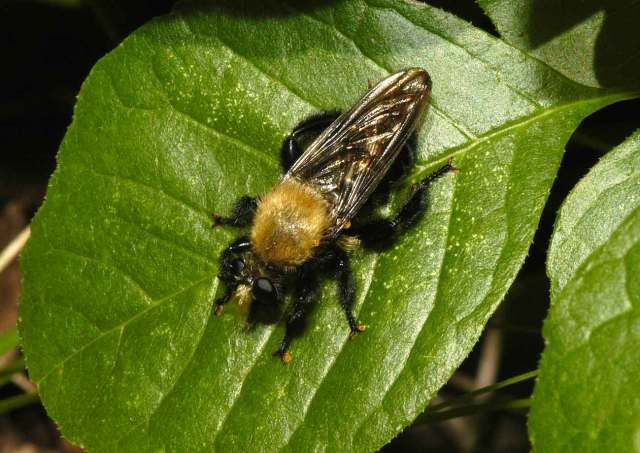 © 2010 Troy and Martha Mullens
© 2010 Troy and Martha Mullens
A more commonly seen robber fly. Probably Promachus? Any definitive ID’s would be appreciated. Leave a comment or contact me.
Update: Thanks to Bob Parks, the robber fly has been ID’d.
Trioria interrupta
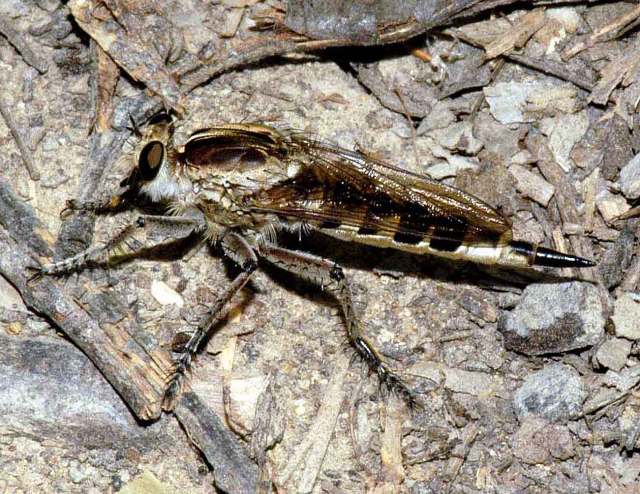 © 2010 Troy and Martha Mullens
© 2010 Troy and Martha Mullens
One of my favorites. A Diogmites sp. This is also known as “the hanging thief”. Many times they are seen hanging by one foot or sometimes two feet while devouring their prey.
Diogmites sp.
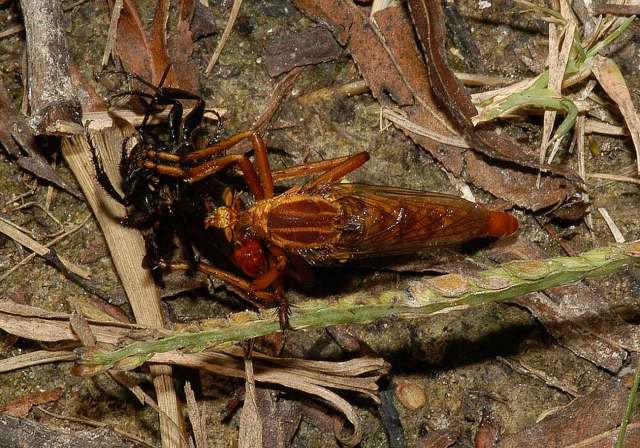 © 2010 Troy and Martha Mullens
© 2010 Troy and Martha Mullens
A portrait photo of Diogmites, courtesy of my brother, Jimmy S. Mullens. This one has really sparse, scruffy facial hair.
Diogmites sp. up close and personal
The next 2 photos are of Efferia sp. E. mortensoni or Pogonioefferia pogonias., a male and female respectively. Notice the bright silver band on the male, and the sharp ovipositor (for laying eggs in dry flower heads and various crevices) on the female.These were photographed early in the day on a cold October morning. It was overcast and the Sun had not warmed them for flight. These were all caught in the sleeping position. Almost all that I saw were head down. Many (most) of this Genera tend to be grayish or gray/brown. All of the male species seen in the field that day were black or very dark to the eye. The females were grayish/brown. There is no color enhancement in the photos.
Efferia sp. , Male
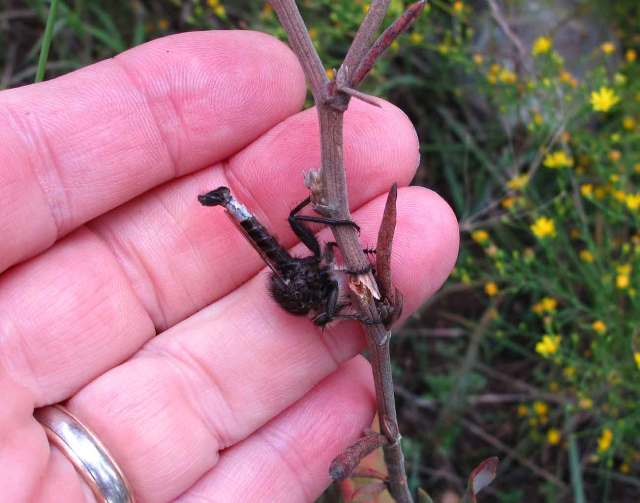 © 2010 Troy and Martha Mullens
© 2010 Troy and Martha Mullens
Efferia sp. , Female
© 2010 Troy and Martha Mullens
Hope you enjoyed this little ‘Robber Fly Refresher’. Leave a comment if you liked it. What was your favorite?
Troy and Martha Mullens


